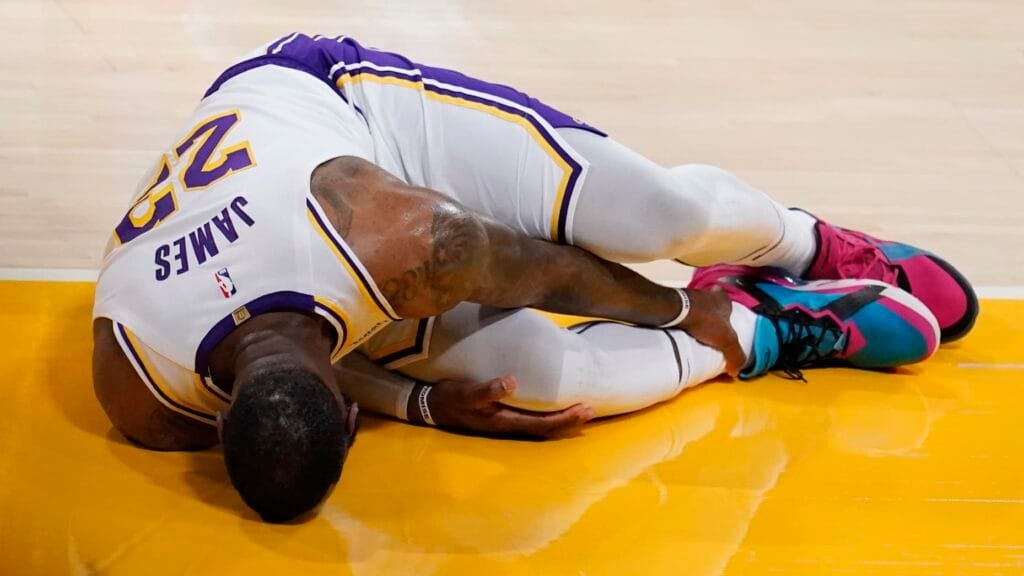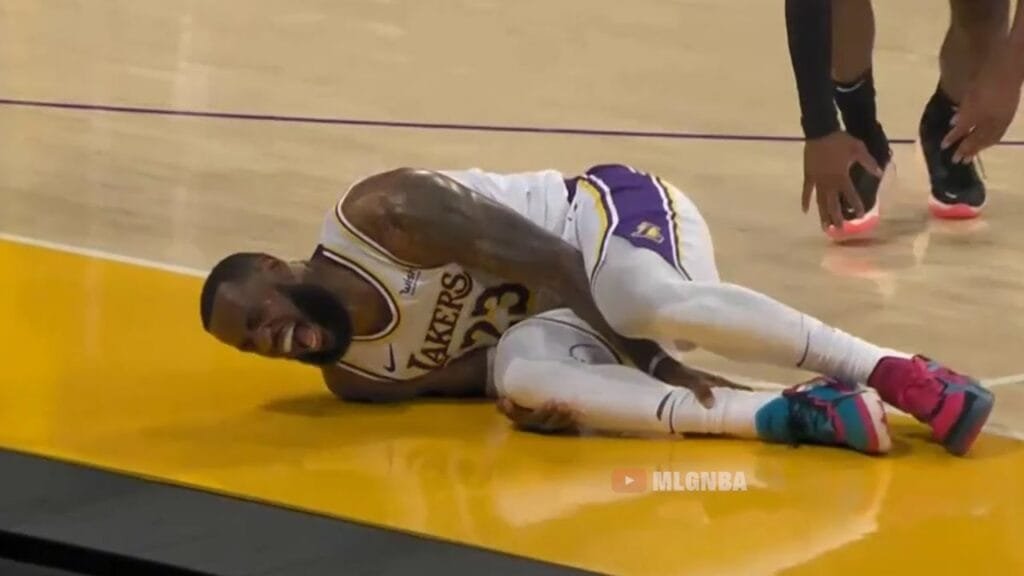The Timeline of LeBron James’ Injury
LeBron James, widely regarded as one of the greatest basketball players of all time, endured a significant injury that raised concerns regarding both his career trajectory and the Los Angeles Lakers’ season. The timeline of LeBron James’ injury began in late 2022 when he first reported discomfort in his right foot during a nationally televised game. Following a few additional appearances, on February 26, 2023, the situation escalated as he was seen limping during the game against the Dallas Mavericks, ultimately leading to his early exit.
After the game, the team announced that James would undergo several diagnostic tests to assess the extent of the injury. The results revealed a right foot strain that would require a period of rest and rehabilitation. Initial projections suggested that he would be sidelined for an estimated four to six weeks, directly impacting the team’s performance and playoff aspirations. Fans expressed both concern and disappointment, understanding the critical role LeBron plays on the court.
Throughout his recovery, LeBron made continuous efforts to return to his optimal health, engaging in physical therapy and adhering to a strict rehabilitation regimen. By mid-April 2023, there were indications that he was on the path to recovery, with increased activity observed in practice sessions. However, the full impact of this injury lingered on, with LeBron cautiously managing his return to gameplay.
His presence was essential for the Lakers, especially in navigating the second half of the season. As the playoffs approached, the uncertainty surrounding LeBron James’ injury added a layer of tension for fans and players alike, while also sparking discussions about the potential long-term implications of his condition on both his performance and the Lakers’ overall success. The sequence of events surrounding this injury underscores the fragility of elite athletic careers and emphasizes the importance of careful management during recovery.
LeBron James Injury: Effects on Performance and Stats
The effects of the LeBron James injury on his performance and statistical output have been a focal point for analysts and fans alike. Before the injury, LeBron was averaging impressive statistics, showcasing his scoring capability and playmaking skills. His points per game stood out at an average of 27.1, with a field goal percentage hovering around 50.5%. His ability to contribute not only in scoring but also in facilitating teamwork was evident with an average of 7.4 assists and 8.5 rebounds per game.
However, following the injury, analysis indicated a noticeable decline in these performance metrics. Post-injury, his points per game dipped significantly to approximately 23.6. This decline in scoring can be attributed to altered gameplay strategies, as LeBron adopted a more conservative approach to avoid exacerbating the injury. His field goal percentage also saw a downturn, falling to approximately 47%, which indicates a struggle with shot selection and execution during his recovery phase.
Moreover, the contributions in assists and rebounds reflected a similar trend. His average assists dropped to 5.8, suggesting that his influence on developing plays was hindered, ultimately affecting the team’s overall offensive cohesion. Additionally, his rebounding numbers fell to 7.1 per game, signaling a diminishment in his ability to impact the game on both ends of the court. As his style of play adapted, the effect was felt not just individually but also on his teammates, who depended on his leadership and overall presence to enhance their own performances.
These shifts in performance metrics highlight the extent to which the LeBron James injury has reshaped his gameplay and impacted his team’s dynamics. Comparisons with past seasons showcase the stark contrast and stress the importance of his enduring physical health on sustained success.
Team Dynamics and Strategy After the Injury
The injury sustained by LeBron James has profoundly affected the Los Angeles Lakers, leading to both immediate and long-term changes within the team’s dynamics and strategies. In the absence of their star player, the Lakers faced the daunting challenge of recalibrating their playing style, which had largely revolved around LeBron’s unparalleled skill set and leadership. Coaches and teammates alike recognized the need to adopt an adaptive approach, which entailed not only changing game tactics but also instilling a sense of resilience and responsibility among other players.

In the initial weeks following the lebron james injury, it became evident that the team’s offensive strategies would require significant adjustments. The coaches implemented a more balanced offense, emphasizing ball movement and player collaboration to compensate for the loss of an elite scorer. This shift aimed to utilize the diverse skill sets of other players, allowing them to step into more prominent roles. Notably, younger players and those previously in supporting positions found opportunities to showcase their abilities, which contributed to the overall team morale and performance.
Teammates expressed a collective determination to fill the void left by LeBron. This camaraderie was essential in fostering a supportive environment where players could thrive despite the challenging circumstances. Insights shared by players highlighted how they leaned on each other, with an increased emphasis on communication and team cohesion. The Lakers had to re-establish their identity, which resulted in a renewed commitment to defensive intensiveness and strategic execution on the floor.
While the immediate challenge of adjusting to LeBron’s absence posed obstacles, it also created opportunities for growth among the remaining roster. Over time, the team developed a sense of unity, underscoring that even in times of adversity, collective effort and shared goals can foster resilience and adaptability, ultimately benefiting the team’s trajectory moving forward.
Looking Ahead: Future Implications of LeBron James’ Injury
The recent injury sustained by LeBron James has prompted widespread discourse surrounding its future implications, both for the player himself and the Los Angeles Lakers. Considering James’ prominence in the sport, any physical setback raises pertinent questions about his long-term health and performance levels. Experts in sports medicine are optimistic regarding his recovery, yet the effects of this injury could linger, potentially impacting his agility and endurance, which have been hallmarks of his playing style throughout his career.
As LeBron navigates the rehabilitation process, considerations about his career longevity come to the forefront. He has consistently demonstrated an ability to maintain an elite level of play well into his thirties, but persistent injuries could shift his focus towards a more cautious approach, prioritizing preservation over performance. This injury may act as a turning point, prompting discussions regarding retirement timelines or, alternatively, influencing his contract negotiations as he evaluates the risk versus reward of continuing to play at an elite level.
Fan and media reactions have been varied, with many expressing concern over how this injury might alter LeBron’s legendary career trajectory. The admiration for his competitive spirit remains high, yet there is also an acknowledgement that resignation may loom closer as injuries accumulate. Additionally, the Lakers organization faces a substantial challenge in re-strategizing. Their immediate actions and long-term planning must accommodate LeBron’s health status, potentially reconsidering roster configurations and identifying talent that can either support or complement his capabilities on the court.
Overall, the ramifications of LeBron James’ injury extend far beyond the immediate context, shaping decisions that will influence both his personal career path and the dynamics of the franchise he represents. Stakeholders, including fans and team management, will watch closely as the ongoing recovery reveals the true extent of effects stemming from this significant injury.
you may also read
